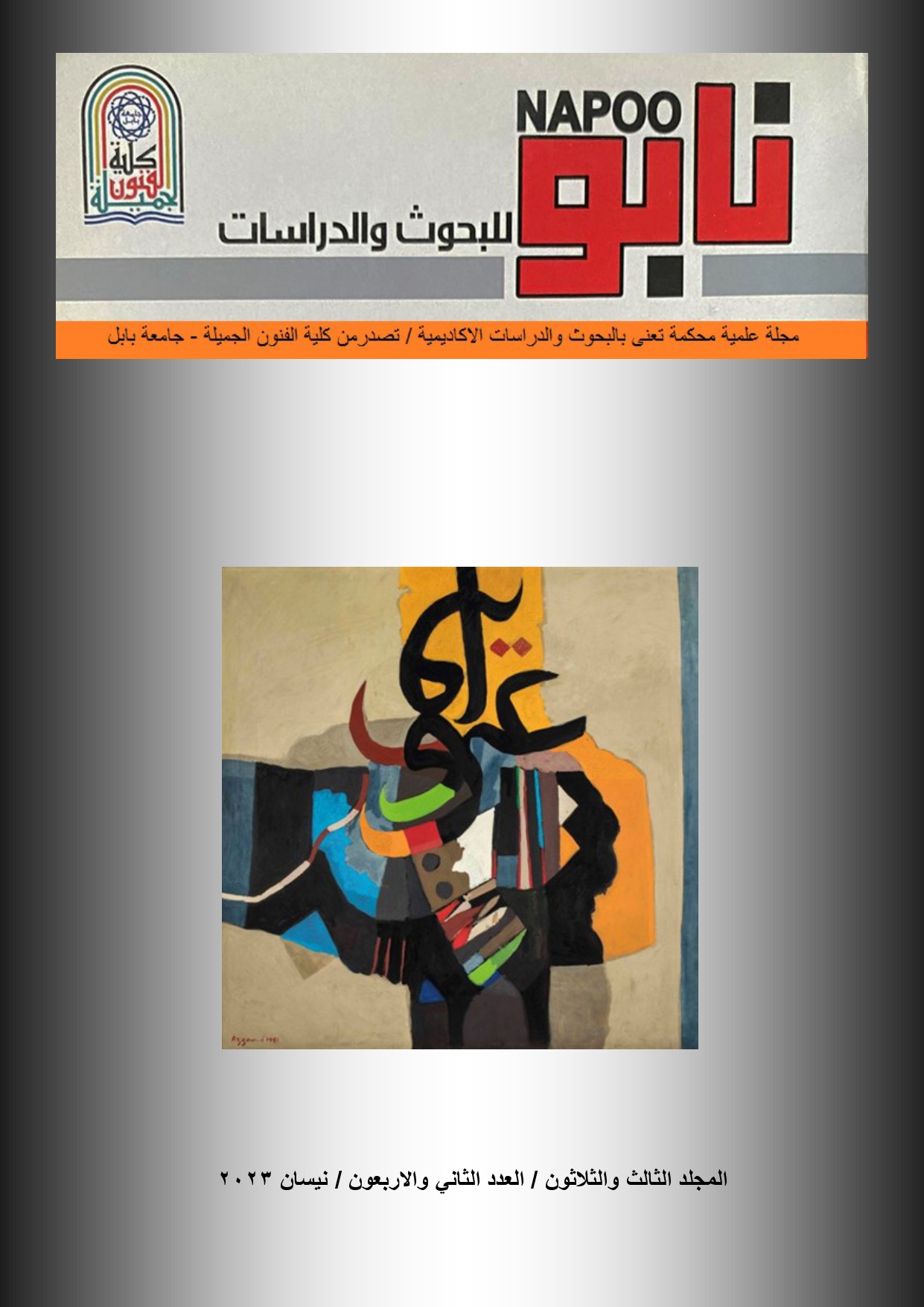Aesthetic Values of the Tales of One Thousand and One Nights in Contemporary Arabic Painting
Abstract
Research Summary
The current research, called "Aesthetic Values of the Tales of One Thousand and One Nights in Contemporary Arabic Painting", is an attempt to study the aesthetic values employed by folk art painters and the stories they employ in their artistic productions, by making use of the drawings of artists from the Arab world, especially by using intellectual references as a means of expressing aesthetic visions. The researcher sought to shed light on this phenomenon scientifically and aesthetically, in addition to the treatment of technology that stimulates the sensations of the aesthetic receiver, and familiarize themselves with the types and techniques adopted as a mechanism of implementation. According to working systems concerned with aesthetically reproducing the artwork, it appears as a self-disclosure of the imaginary ideas and visions that merge in the same Arab artist, so it came necessary to study and analyze them and identify them. The research included four chapters dealing with the first chapter: The problem of research that was presented and summarized by asking What are the aesthetic values of the tales of one thousand and one nights in contemporary Arabic painting? The research also included the importance of research, the objective of which is to uncover the aesthetic values of the tales of one thousand and one nights in contemporary Arabic painting. It also included knowledge of the limits of the research, which was limited to studying the aesthetic values of the tales of one thousand and one nights and analyzing some examples of these works in contemporary Arabic painting from 1970-2021, which were implemented with various materials. As for the second chapter, the theoretical framework, it included two researchers dealing with the first research on the historical origins of the folk tale and the second research on the aesthetic experiences of the tales of a thousand and one nights in the drawings of artists from the Arab world. Then the chapter ended with some indicators of the theoretical framework for research. As for the third chapter, it deals with the presentation of research procedures and the research community, from which three works of art were selected for some artists of the Arab world in a deliberate way to cover the limits of research. The works were analyzed using the descriptive approach. Finally, the fourth chapter, which deals with each of the results. The researcher sees the opening of stories (one thousand and one night) and their tending towards fiction as an motivation for the Arab artist to imagine the subjective side at the cost of the objective side, as well as an interest in the decorative side and the showing of Arab or hazards and decorations for work figures. She concluded that artists, in turn, assert a delicacies and a culture of the masses, producing their ideas in subconscious inspirational creation with a variety of styles, derived from the figurative and symbolic repertoires of a free imagination. The researchers also recommended that a specialized department should be established to study the art of folk tales within faculties and institutes of fine arts and that a theoretical subject based on the definition of aesthetics of folk tales should be introduced in the plastic arts departments of the specialized faculties and institutes.




